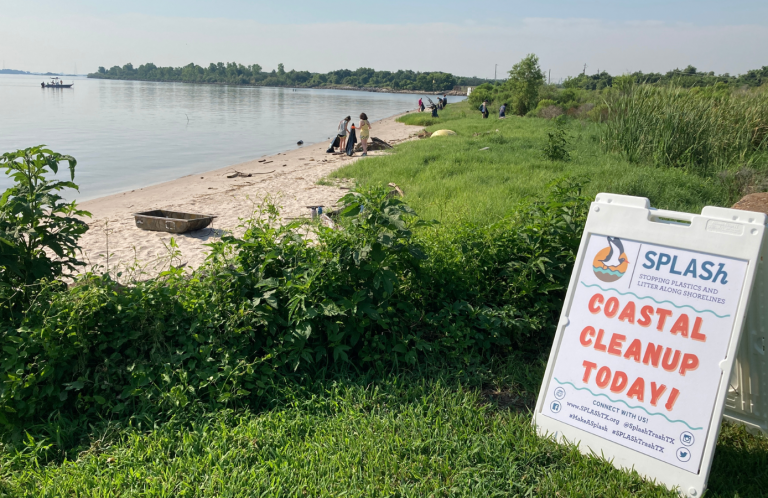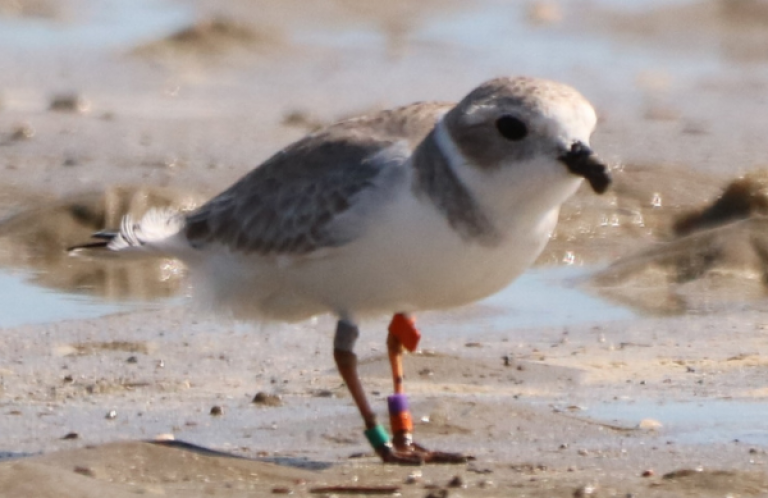Tips to Safely Share the Beach with Migrating Shorebirds this Labor Day Weekend

Considered one of the best long weekends for bird sightings and photography, Labor Day weekend marks the unofficial end of summer and beginning of fall bird migration. While millions of people flock to beaches and parks with rivers or lakes for recreation, many shorebirds like the Least Tern, Piping Plover, Sanderling, and Snowy Plover will be making pit stops along the very same places as they head south for winter to warmer environments with more food sources. With many shorebird species in steep decline, American Bird Conservancy (ABC) has the following tips for mindful beachgoers.
Tips to Share the Beach and Help Coastal Birds
- Celebrate responsibly. During Labor Day weekend, crowds and noise put extra stress on migrating birds. Loud noises like music can startle them, leading to less foraging time and even collisions with nearby buildings. With many shorebird species filling up with food and prepping for their nonstop long-distance travels (some as long as 9,000 miles!), giving them space while preventing noise distractions will help them succeed in reaching their final destinations.
- Pay attention to signs. Visitors should respect areas that are roped off or marked with signs. This could be a fun opportunity to teach children about unique birds and other wildlife. Encourage kids to watch out for birds and ask them to play a safe distance away to avoid disturbing bird families.
- Watch where you step. ABC recommends that beachgoers fish, swim, and play 50 yards away from any large congregations of birds. When in doubt, stay away from where groups of birds appear to be feeding and resting.
- Watch where you drive. What applies to foot traffic also applies to vehicles. If driving on the beach, choose the path of least disturbance. Drive where other vehicles have driven and avoid blazing new trails. If birds are resting or foraging on the beach, drive slowly and try to choose a path that doesn't spook them.
- Keep your dogs on leashes — or at home. Free-roaming dogs mimic natural predators in the eyes of a bird, causing stress and even direct harm. Dogs can also overheat and/or become dehydrated at the beach, so for their safety as well as that of the birds, consider keeping them at home.
- Pick up trash, and pack it out. Birds can be killed by plastic pollution when they accidentally ingest it or become tangled in it, and that includes campfire trash. While many beaches and parks have trash cans, these can overflow on busy holiday weekends. To ensure your trash doesn't wind up on the beach or in the water, pack out what you pack in. Bring reusable coolers, containers, and utensils to cut down on plastic waste.
- Bonus: join a beach cleanup! ABC helps run a Gulf Coast initiative called SPLASh (Stopping Plastics and Litter along Shorelines) that organizes regular coastal cleanups to remove beach litter and gather data to better understand how trash impacts wildlife in the Galveston Bay watershed. If you live in the area, sign up for their newsletter to stay informed about planned cleanups, or look for similar beach cleanups near you.
Different regions have different bird species feeding on beaches and shores, but many have similar behaviors and reactions to being disturbed. Knowing what you might encounter will help you avoid harming the birds, and it can make your beach visit even more fun. Here are some notable birds in four regions of the United States:
Birds of the Gulf Coast
During early summer, Least Terns and Black Skimmers nest in colonies along the Gulf Coast. Wilson's and Snowy Plovers maintain single-pair territories, but can often be found within Least Tern colonies. American Oystercatchers tend to be more spread out and favor both beach habitat and islands covered with oyster shells (especially along the upper coast of Texas). Read more about ABC's Gulf Coast conservation effort and how we and our partners are working to help beach-nesting birds.
Birds of the Atlantic Coast
Federally Threatened Piping Plovers can be found on Atlantic Coast beaches extending from North Carolina to Maine. They are especially concentrated along the northeastern coast, notably along the beaches of Long Island, New York, and the southern Delmarva Peninsula. Other species you might encounter include the Least Tern, Black Skimmer, American Oystercatcher, and Wilson's Plover.
Birds of the Pacific Coast
Western beaches host populations of the federally Threatened Western Snowy Plover, Endangered California Least Tern, and the Black Oystercatcher (which is more frequently found on rocky rather than sandy beaches). While the terns tend to be colonial in their nesting habits, the plovers are more spread out, often favoring sites where rivers enter the ocean.
Birds of the Great Lakes
Inland beaches are also crucial habitats for shorebirds, and the Great Lakes area shouldn't be overlooked. Federally Endangered Great Lakes Piping Plovers are making a comeback and expanding their range to include historic nesting areas, including places like Illinois and Ohio. Other shorebird species, such as the Killdeer, also rely on these areas.
###
American Bird Conservancy (ABC) takes bold action to conserve wild birds and their habitats throughout the Americas. Inspired by the wonder of birds, we achieve lasting results for the bird species most in need while also benefiting human communities, biodiversity, and the planet's fragile climate. Our every action is underpinned by science, strengthened by partnerships, and rooted in the belief that diverse perspectives yield stronger results. Founded as a nonprofit organization in 1994, ABC remains committed to safeguarding birds for generations to come. Join us! Together, we can do more to ensure birds thrive.
Media Contact
Jordan Rutter
Director of Communications
media@abcbirds.org


















































